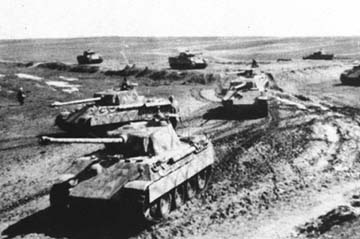5.SS-Panzer-Division “Wiking” (History, Battles, Org, Service)
Lineage | ||||||||||||||||||||||||||||||||||||||||||||||||||||||||||||||||||||||||||||||||||||||||||||||||||||||||||||||||||||||||||||||||||
| ||||||||||||||||||||||||||||||||||||||||||||||||||||||||||||||||||||||||||||||||||||||||||||||||||||||||||||||||||||||||||||||||||
5th SS Panzer Division “Wiking” History | ||||||||||||||||||||||||||||||||||||||||||||||||||||||||||||||||||||||||||||||||||||||||||||||||||||||||||||||||||||||||||||||||||
 This Division was formed in December 1940. Initially, the Division was called Germania but the title of the unit was changed to Wiking in January 1941. In February, a Finnish Volunteer unit was raised and attached to the 5th SS Panzer Division (For more about this specific foreign unit, please look under the section on German foreign units in the section on Finland). Training for the Division took part at Truppenübungsplatz Heuberg. The Division was ready for action in April 1941. This Division was formed in December 1940. Initially, the Division was called Germania but the title of the unit was changed to Wiking in January 1941. In February, a Finnish Volunteer unit was raised and attached to the 5th SS Panzer Division (For more about this specific foreign unit, please look under the section on German foreign units in the section on Finland). Training for the Division took part at Truppenübungsplatz Heuberg. The Division was ready for action in April 1941.SS Wiking BattlesWiking first saw action as a part of Army Group South fighting for Tarnopolin Galacia on June 29th, 1941. In August 1941, the Division fought on the Dnieper River in attempts to establish a bridgehead. Soon after, the Division moved through Dnepropetrovsk and on to Rostov. In the Winter of 1941, the Division moved back to the line of the Mius River where it spent the winter months. When the Germans launched offensives in the Spring and Summer of 1942, Wiking fought into and through the Caucasus region, pushing very far South. Wiking stayed in the Caucasus region until the Spring of 1943. In the Wiking Division, as was common with many Divisions, elements were added and removed many times throughout its existence. The Nordland Regiment was removed to help establish another Waffen SS Division, as were elements of the 5th SS Panzer Division that contained Scandinavian members. Also, Narwa, an Estonian unit, was transferred to the Division and then removed in1944. In October 1943, the 5th SS Panzer Division was renamed a full Panzer Division. In the Summer and Fall of 1943, the Division fought in defensive operations in the Area of Kharkov and the Dnieper River. When the Soviets launched their massive offensive against the German Army Group Center in June 1944, Wiking was one of many Divisions that was trapped in numerous pockets that were created as the Soviets rushed Westward towards the Reich. Wiking was trapped in the Cherkassy Pockets, and being the only Panzer unit in that pocket, spearheaded an attempt to break out. At the time, an independent foreign formation, Wallonien, was a part of Wiking. Although the 5th SS Panzer Division managed to break out, it lost all its Armor and a great deal of equipment and personnel while doing so. The remaining men and equipment that managed to survive the Cherkassy Pocket were formed into a Kampfgruppe that was soon transferred to Poland and amalgamated into a reformed 5.SS-Panzer-Division “Wiking”. At the same time that Wiking was reformed, the Soviets had pushed all the way to the Vistula River and to Warsaw in Poland. Wiking took part in the desperate attempts along with the 3.SS.Panzer-Division “Totenkopf” and the Heer 19.Panzer-Division to stem the Soviet advance. Wiking helped to push the Soviets out of Warsaw and back across the Vistula River where the Front stabilized until January 1945. Wiking was pulled from Warsaw in December 1944 and transferred south for the attempted break-through to Budapest to rescue 45,000 trapped Germans located in that City. Wiking pushed forward for two weeks, but could not reach the city against massive Soviet strength and resources. Wiking then fought to the West of Budapest in more defensive operations, moving into the area of Czechoslovakia, where the Division surrendered to the Soviets in May 1945. Foreign VolunteersThe Wiking Division was well known not only for being a fierce and bitter fighting unit, but because a great number of its members were not German, but were foreign volunteers from many other Western and Northern European Countries. The following listing is a general break-down of the foreigners in the ranks of Wiking. Holland: 631 Dutchman were reported in the Westland Infantry Regiment in June 1941. Flanders (Flemish Speaking Belgium): Members of this area were found mainly in the Westland Infantry Regiment. Norway: 294 Norwegians were reported in the Division on June 22, 1941, in the Nordland Infantry Regiment. According to some, another unit was made up of Norwegian members, the SS Freiwilligen Panzer Grenadier Abteilung, but others state that it was a part of Regiment Nordland, and not independent. Denmark: 216 Danes were reported in the Nordland Infantry Regiment in June 1941. Another Danish unit was reported to have been formed called Danmark which may have been a special unit. Switzerland: Conflicting information gives the Swiss contribution to this Division as being either a single individual, while another records the level at 800. Finland: 421 Finns were in the Division in 1941, and the Finish Volunteer Battalion was added in 1942. Sweden: Varying numbers of Swedes are said to have served in the Division. Estonia: Estonians served in the SS Panzer Grenadier Abteilung Narwa. Wallonia: (French-speaking Belgium)- Wallonian members served in these Strumbrigade Wallonien. Volksdeutsche: Some divisional replacements were drawn from Volkdeutsche in the Balkans region, and a few other locations.
| ||||||||||||||||||||||||||||||||||||||||||||||||||||||||||||||||||||||||||||||||||||||||||||||||||||||||||||||||||||||||||||||||||
Organization | ||||||||||||||||||||||||||||||||||||||||||||||||||||||||||||||||||||||||||||||||||||||||||||||||||||||||||||||||||||||||||||||||||
| ||||||||||||||||||||||||||||||||||||||||||||||||||||||||||||||||||||||||||||||||||||||||||||||||||||||||||||||||||||||||||||||||||
Commanders | ||||||||||||||||||||||||||||||||||||||||||||||||||||||||||||||||||||||||||||||||||||||||||||||||||||||||||||||||||||||||||||||||||
| Obergruppenführer Felix Steiner, 12.01.40 – 5.01.43 Obergruppenführer Herbert Gille, 5.01.43 – 8.06.44 Oberführer Edmund Deisenhofer, 8.06.44 – 8.??.44 Standartenführer Rudulf Mühlenkamp, 8.??.44 – 10.09.44 Oberführer Karl Ullrich, 10.09.44 – 5.05.45 | ||||||||||||||||||||||||||||||||||||||||||||||||||||||||||||||||||||||||||||||||||||||||||||||||||||||||||||||||||||||||||||||||||
Knights Cross Holders | ||||||||||||||||||||||||||||||||||||||||||||||||||||||||||||||||||||||||||||||||||||||||||||||||||||||||||||||||||||||||||||||||||
| ||||||||||||||||||||||||||||||||||||||||||||||||||||||||||||||||||||||||||||||||||||||||||||||||||||||||||||||||||||||||||||||||||
War Service | ||||||||||||||||||||||||||||||||||||||||||||||||||||||||||||||||||||||||||||||||||||||||||||||||||||||||||||||||||||||||||||||||||
|

